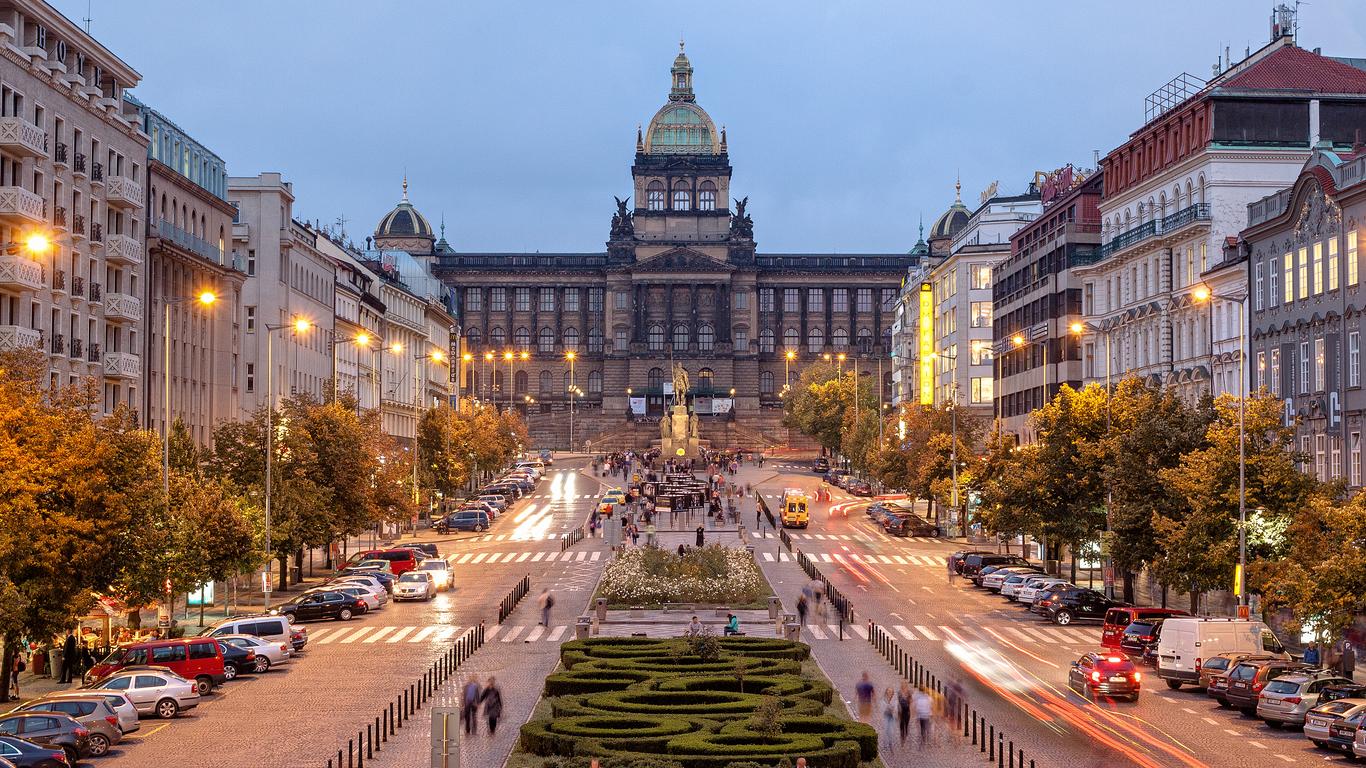With a name that can often be deceiving, Wenceslas Square is a boulevard that stretches 750 metres through the heart of Prague’s Nové Město, or New Town. It’s home to the great National Museum and ornate Prague State Opera and has long been the staging post for political rallies and protests throughout its history, particularly during the 1989 Velvet Revolution. It forms part of Prague’s historic centre which has been declared a UNESCO World Heritage Site.
Despite its name, Prague’s New Town was laid out as early as 1348 by Charles IV with Wenceslas Square at its heart. It is named for St. Wenceslas, or Svatý Václav, the patron saint of the Czech Republic who holds a commanding position today on his horse in front of the National Museum. This impressive building was designed by Czech architect Josef Schulz at the end of the 19th century and houses an outstanding collection of both natural scientific and historic artefacts. Standing alongside is the equally magnificent Prague Opera House, originally opened in 1888 as the New German Theatre and serving as a refuge for artists fleeing Nazi Germany during the 1930s. Most of the buildings which line the boulevard date to the late 19th and early 20th centuries, including the Melantrich Building where Alexander Dubček and Václav Havel famously appeared on the balcony together during the Velvet Revolution. Wenceslas Square now serves as a lively nightlife area filled with hotels, restaurants and bars, as well as the hub of the New Town’s shopping district, and with the Old Town Square just a five-minute walk to the north, it remains a popular place to stay in the city.
Prague’s metro line A runs beneath Wenceslas Square and the bustling Muzeum and Můstek stations both have entrances along the boulevard. While part of the square is open to cars, the northwestern end is pedestrianised for visitors to explore the area on foot.
Wenceslas Square was originally planned as the Prague horse market, or Koňskýtrh, around 650 years ago. It wasn’t renamed Svatováclavské náměstí, or Saint Wenceslas Square, until 1848, and to meet “by the horse” of King Wenceslas’ statue is still a favourite gathering point today.





